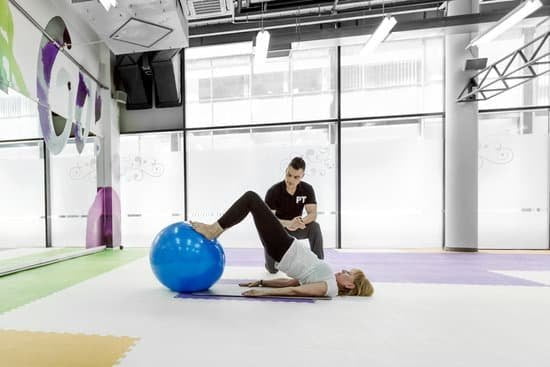Set Goals
When setting goals for your fitness and health journey with a personal trainer, it is important to have an overall plan and clearly defined objectives. Start by considering your long-term vision for your fitness goals and aspirations such as increasing core stability, general body toning, losing body fat or taking part in a competitive event. Think about the changes and improvements you would like to achieve over time and use this as the basis for short term objectives.
It’s helpful to break down bigger goals into smaller milestones for each month, week or session with your personal trainer. Talk to them about what would be possible in that period of time given your current levels of fitness, nutrition habits, lifestyle commitments etc. Agreeing achievable and realistic goals will help keep you on track, motivated and developing while not feeling overwhelmed by expectations that are unobtainable within a certain period of time.
Make sure you assess progress regularly, both in terms of measurable physical improvements such as body composition changes but also how you are feeling mentally after each training session – these two components should progress hand in hand with each other. Celebrate successes along the way; this could be something as small as sticking to an exercise program each week or even just showing up for every session with enthusiasm! Maintaining focus on each individual goal you set will help take strides towards achieving the big picture desired outcome.
Recovery
Recovery is an essential part of any fitness regimen and a great way to maximize results. People often neglect recovery because they think that training hard is the most important factor in getting fit. However, rest and recovery are just as important for recharging your body and preventing injury.
One of the best tips for recovery is to get enough sleep. Aim for seven to nine hours of quality sleep each night so that you can feel energized, focused, and motivated during your workouts. Additionally, eating plenty of nutritious meals helps replenish energy levels needed during exercise. Be sure to avoid processed, high-sugar foods which can cause fatigue or mood swings, as well as interfere with progress.
Stretching after each workout will help reduce soreness and improve flexibility while promoting proper alignment throughout the body. Yoga is also an excellent choice when you want to give your muscles a deep-tissue massage with various poses designed specifically for stretching out tight areas of the body.
Finally, take occasional rest days off from training altogether so your body has time to properly recover without pushing itself too hard. This will help prevent overtraining syndrome (OTS) which happens when too much exercise leads to decreased performance, sleep trouble, muscle soreness and/or fatigue. Fitting in quick meditation sessions during rest days can be beneficial both physically and mentally by helping to relieve stress and clear your mind from any built-up tension or anxiety due to rigorous workout routines — making it easier for you to have productive training sessions throughout the week longer term.
Nutrition
The goal of having a personal trainer is to help you eat a balanced and nutritious diet. A nutrition plan tailored to your fitness goals and lifestyle can help you reach your objectives more effectively than just following the latest fad diet. With the right guidance, you can design a meal plan that’s easy to follow yet supports your physical activity and optimal health.
Your personal trainer can start by evaluating your overall dietary habits, including any allergies or intolerances. Once they know what kind of foods work best with your body, they can create an eating plan that includes the proper balance of protein, carbohydrates, fats, vitamins and minerals. Depending on your individual fitness goals, your trainer may suggest food items such as lean meats, seafood, vegetables and fruits for their higher nutritional value or choose low-fat dairy products for extra calcium intake. They will also factor in beverages such as water for hydration which will be essential for any exercise regimen.
It’s also important to think about portion size when creating a healthy meal plan. By helping you determine appropriate serving sizes at mealtime from different food groups — proteins, grains, dairy products — it provides an easy reference for what should be eaten at each meal or snack throughout the day. Your trainer will also discuss regular physical activity as part of this equation since those calories need to be taken into account while avoiding consuming too much food if you’re trying to maintain or lose weight. Furthermore they may suggest concepts such as mindful eating – paying attention to what and how we eat instead of just consuming it absentmindedly – which leads to better digestion and absorption of nutrients while helping avoid mindless snacking!
Preparation is key in any successful diet change, so a personal trainer will also provide tips on how best set yourself up with ingredients ahead of time so that healthy meals are easier and faster to prepare — both important factors when life gets busy! Planning ahead can include prepping meals in advance by cutting up fruit and veggies or hard-boiling eggs; purchasing pre-made options from salads from the grocery store; against selecting canned items over fresh ones; preparing smoothies; stocking up on shelf-stable ingredients like beans in case something pops up unexpectedly; organizing snacks like nuts or yogurt cups that are easy to grab on-the-go; or even setting aside time for menu planning for a few weeks ahead! Regardless of the approach taken together with your personal trainer this nutrition plan ensures ample nutrition allowing long term success with reaching fitness goals!
Safety
Safety should always be a top priority when exercising, especially for women. Women’s physiology means that exercises and workouts appropriate for men may cause injury or harm to female bodies. In order to ensure maximum safety while getting the most out of your workouts, here are some tips you should keep in mind:
1. Make sure to warm up before any strenuous workout by doing some light aerobic exercises and stretching. Warm muscles are less likely to become injured than cold muscles. Consider starting off with dynamic stretching instead of static stretching which is more effective and safer when done properly.
2. Keep proper posture while exercising in order to put the least amount of strain on your body as possible. Use correct form and be aware of where your body is going throughout the movement rather than just thinking about how many reps you can do. Doing so will also help prevent injury and make sure you get the most out of each exercise.
3. Pay attention to hydration levels before, during, and after workouts. Your body needs proper hydration levels in order to function at its peak performance levels; consequently, drinking plenty of water throughout your whole fitness routine can prevent dehydration-induced injuries or exhaustion from setting in too quickly during your session.
4. Take it easy! Don’t overexert yourself or push too hard if this is your first time on a fitness journey or trying a new type of workout for the first time; slowly introducing yourself into different types of exercises will pay off in the long run due to helping avoid overtraining injuries or overexertion-based injuries down the line as well as providing better results in terms of strength gains and fat loss progress overall. Take progress gradually and if anything ever feels wrong stop immediately! Additionally, make sure to not only listen to yourself but be mindful of feedback from your certified personal trainer who will be able to best assess what an appropriate challenge level is for you given that he/she knows best regarding how your body reacts during different sessions!
Mental Health
As a personal trainer who specializes in women’s fitness, an important part of what I do is helping individuals to understand the important role that their mental health plays in achieving their fitness goals. By incorporating mindfulness and stress management techniques into your fitness routine, you can achieve enhanced and sustainable results.
Mindfulness is paying close attention to the present moment from an open perspective and having non-judgmental awareness of one’s thoughts, feelings, and bodily sensations. Developing this sense of self-awareness is key to effectively managing stressors when they occur. When introduced into your fitness training, mindfulness can be achieved by focusing on breathing patterns associated with movement, tuning out external distractions and instead concentrating on the specific body parts being targeted.
There are many tools available for you to help manage stress levels such as deep breathing exercises, progressive muscle relaxation strategies, yoga/ Pilates etc. By practicing these regularly during your workouts it will help to improve focus on form and execution while elevating mood which leads to increased performance. Additionally, a healthy level of physical activity may assist in reducing cortisol levels thus decrease fat deposits especially around the abdominal area giving better long term results concerning weight loss goals.
Overall, focusing on both physical and mental wellbeing can result in improved self confidence due to meeting the desired objectives in terms of health or weight loss while also aiding emotional balance and growth through self-awareness practices such as mindful breathing or meditation allowing confidence levels to be maintained over time whilst avoiding burnout .
Variety
A personal trainer can help a woman with her fitness goals by providing variety to keep her workouts interesting. Changing up the routine is essential for good physical and mental health, as continuing to do the same exercises causes boredom and a lack of motivation. Personal trainers can come up with new and innovative ways to challenge the client by switching up both equipment and exercises.
For example, replacing barbells with kettlebells or doing overhead presses instead of bench presses can keep things fresh. Switching from running on the treadmill to outdoor circuits can give a unique twist to regular cardio routines. Personal trainers can also incorporate high-intensity interval training (HIIT) such as burpees, squats, planks or mountain climbers into a workout schedule. These explosive movements activates different muscle groups while also getting your heart rate going. Other options include using resistance bands, dumbbells and other gym equipment in circuit-style workouts. Doing bodyweight exercises like crunches, push-ups, lunges and leg lifts are also useful additions that don’t require any special equipment but still get great results. Working out with friends or hiking in nature can set an invigorating tone for your workout routine for anyone wanting something different from the gym. Ultimately, varying exercise regimens keep clients engaged in their fitness journey by empowering them to grow mentally, emotionally and physically stronger through trying new challenges!
Time Management
Exercising consistently can be a challenge, particularly if you have limited time to spare. However, working out with a personal trainer is a great way to help ensure that you make your workouts part of your regular routine. Here are some tips to effectively manage your time and make sure that exercising with your personal trainer remains a priority:
1. Schedule Ahead: If possible, sit down with your personal trainer in advance and plan out a schedule for your workouts. Choose days and times that work best for you so that exercise becomes part of your consistent routine.
2. Brand Each Session as an Appointment: Treat each scheduled session with the same importance as any other appointment on your calendar such as a doctor’s visit or meeting at work. You may even set yourself reminders in advance so that you have enough time to prepare before each appointment.
3. Utilize Technology: Apps like Fitplan and Trainerize are great for helping remind you about upcoming appointments and tracking progress over time, making it easier than ever to stay on top of workout plans created by personal trainers during busy times or when traveling regularly.
4. Create an Accountability System: One of the best ways to ensure consistency is by telling someone else—preferably someone who will hold you accountable—about each upcoming session with the personal trainer. Let them know when they can expect an update from you after each workout so they can provide additional motivation when needed!
Support
It is important to have family and friends who will support and motivate you on your journey towards physical fitness. Having encouragement and help from loved ones can make the challenge of maintaining a healthy lifestyle less daunting.
Finding people to support you is key, whether it be family members or close friends that are willing to exercise with you or give you words of encouragement. You can also join support groups with other women in the same position to share experiences, provide motivation and discuss progress. Joining a gym or other fitness-oriented organization can also provide social interaction and accountability with others focused on similar fitness goals. Additionally, having someone to watch over your form while exercising could help improve technique, so having professional guidance from a personal trainer could be beneficial as well.
Making sure your household has healthier food options available for you is another great way for family members to support your journey. Ask them not to keep tempting snacks around like chips or cookies, but instead switch out some of those foods for healthier alternatives such as fruits and vegetables. Friends can also be good about giving away those temptations if they have them when hanging out together – like avoiding French fries when eating out or providing healthy smoothie recipes at get togethers! Meeting up with friends for leisurely walks is another great way of getting both mental relief while accomplishing a physical goal too – it’s win-win! Finally, always remind yourself why you want to get fit and maintain a steady workout schedule while staying motivated by surrounding yourself with loved ones who are committed to supporting your goals; No matter how hard your journey may become there will always be someone there ready to provide encouragement and guidance!
Technology
Today’s personal trainers are taking advantage of technology in several ways to help track, develop, and motivate clients toward success. With the use of wearables, such as smartwatches, or even just a basic fitness tracker, they can measure distance travelled in running or cycling workouts, time spent doing different exercises, and even calories burned. Having this data at hand allows them to not only see the progress their clients are making, but to strategically plan future goals accordingly.
Other platforms like smartphone apps allow trainers to encourage consistency by allowing their clients to check-in directly from their phone and view other details about the workout session through digital notes. This is beneficial for both client and trainer since it gives a better foundation for understanding what’s working well and what can be improved upon from both sides.
In addition, having an online presence is also very helpful for trainees looking for personalized women’s fitness programs from home. Through webpages or social media sites like Instagram or Pinterest, personal trainers can post helpful diet plans, recipes videos with exercises demonstrated by themselves or recorded instructions on how one can implement these exercises without the aid of the trainer present. This helps keep clients motivated and accountable even when they’re not being supervised during sessions enabling them to seek progression even in times when they may feel discouraged.
Conclusion
It is important to remember that a professional personal trainer not only helps you reach your goals in women’s fitness, but also educates and motivates you along the way. Investing in a personalized program tailored to meet your individual needs can be a great way to gain success when striving for your health and physical fitness goals. When choosing a personal trainer, it’s imperative that you select one who understands female physiology and has experience creating workout programs specifically for women. Look for trainers who are passionate about promoting the health of women, provide accountability, and put the emphasis on having fun over anything else. Lastly, don’t forget that eating well is just as important as working out; ask your personal trainer about nutrition counseling services or if they know of any nutritious meal/snack ideas. By making yourself a priority and seeking help from experts like personal trainers, you can increase your chances of succeeding in your journey towards better physical health.

Passionate about providing useful information to anyone with an interest in the field of Personal Training, I strive to pass on to our readers quality information and to answer any questions about Personal Trainers, the work they do and how to become one.





